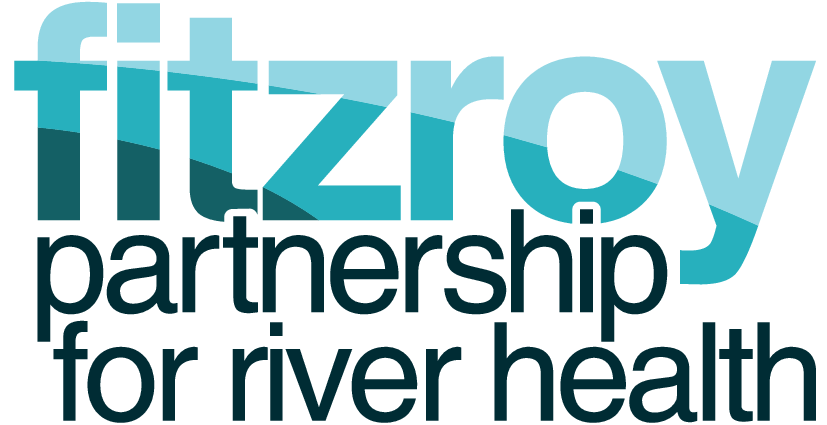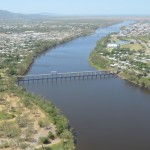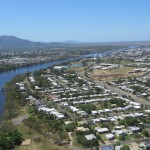[wqip-tabs]
Urban Environment
Urban areas can contribute a wide range of pollutants to the aquatic environment, including sediment, nutrients and pesticides, and toxicants such as heavy metals, hydrocarbons and pharmaceuticals. Urban areas contain larger expanses of impervious surfaces compared to other land uses, which results in increased run-off rates; lower water infiltration and pollutant interception rates; increased flow velocity resulting in increased erosion impacts on local waterways; faster and higher flood peaks; and a higher delivery rate of pollutants to receiving waterways.
In the Fitzroy Region, urban areas currently contribute less than ten percent of the total pollutants entering the Great Barrier Reef lagoon, however, this contribution is disproportionate to the areal extent that urban land use occupies in the catchment (less than two percent). Urban areas are expanding along the Capricorn Coast from Yeppoon to the south of Emu Park, as well as around Rockhampton and Gladstone. The location of these urban centres close to the coast is a significant factor in the transport of pollutants to the Reef.
Urban areas under development for housing or industry present the greatest risk for water quality impacts, particularly for sediment run-off. Other diffuse-source pollutants include run-off from stormwater drains and impervious surfaces such as concrete. Point-source pollutants mainly comprise nutrient discharge from sewage treatment plants at Yeppoon and Rockhampton; in Gladstone, all treated water is utilised, mainly by industry.
The State Planning Policy state interest guideline on water quality seeks to ensure that development is planned, designed, constructed and operated to protect the environmental values of Queensland waters. The provisions of this policy allow for local governments to adopt alternative, locally appropriate, solutions to stormwater management in their planning schemes. Water Sensitive Urban Design (WSUD) includes principles that should be applied to manage urban water and reduce adverse impacts on the natural water cycle. Common elements of WSUD to manage stormwater include conveyance of runoff through vegetated (usually grassy) swales rather than pipes or concrete drains (thereby reducing flow velocity and increasing infiltration); and introducing constructed wetlands and bioretention systems to assist with water filtration.
Click on the thumbnails below for a larger image.
- Urban Development
- Aerial View of Rockhampton
- Rockhampton During A Flood





